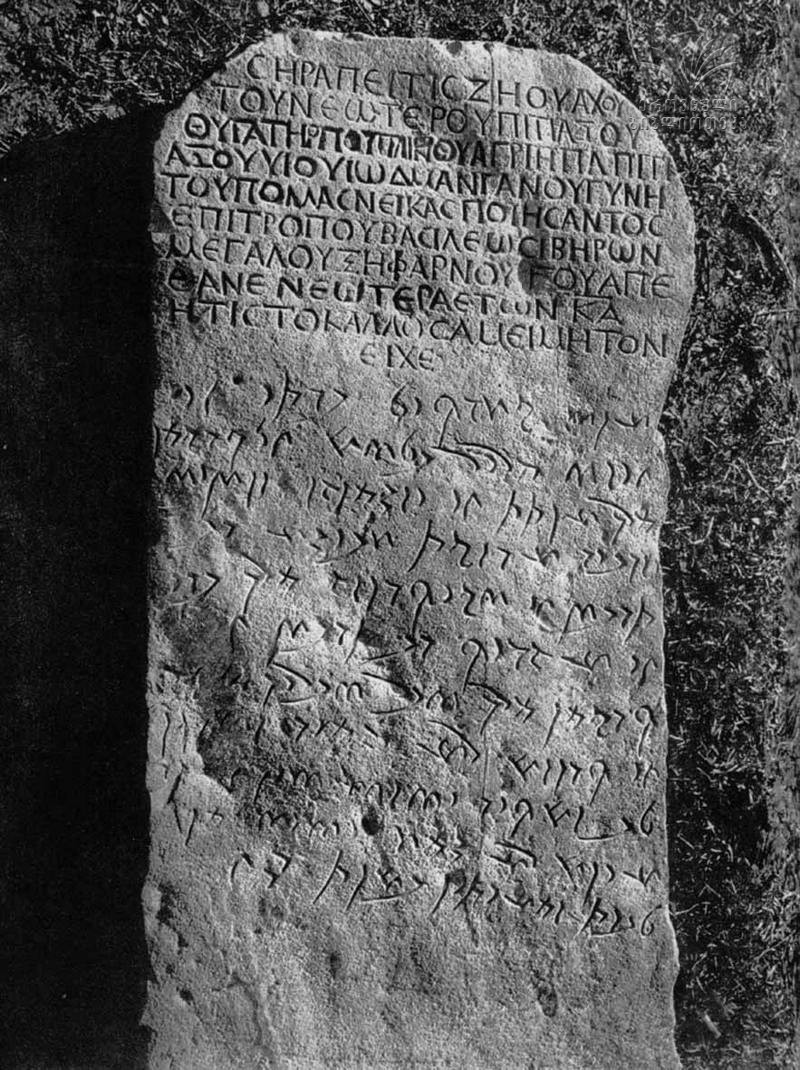Armazic Language

Armazic Language is one type of Aramaic of the northeastern Mesopotamian group, which was used in Georgia and Armenia. The term Armazic Language was coined by the academic G. Tsereteli after studying Aramaic steles (1st-2nd centuries) discovered in Mtskheta-Armazi in 1940 (see Bilingual Inscription of Armazi, Armazi Monolingual Inscription). There are ceramics and jewelry discovered in Georgia that have inscriptions in this language. For example, a large bowl used for storage (3rd century) from Bori village in west Georgia, an Aramaic inscription in the Dzalisi Church chapiter, etc. Plates depicting hunting scenes, which were discovered in Dedoplis Mindori in recent years, grab our attention because some of these have small inscriptions in the Armazic script. Inscriptions on the rock (2nd century) discovered in Garni (Armenia) in 1961 should belong to this language. Some researchers believe that Aramaic inscriptions of Pinakes (8th-9th centuries) of Mazandaran (Iran) are in Armazic language, more precisely in “Later Armazic” (F. Altheim, R. Schtill).
Armazic Language had a long history of evolution. Its source, like all northern Mesopotamian languages, is the Aramaic of Achaemenid (so-called “Official” or “Imperial Aramaic”) period. After the fall of the Persian Empire, various local writing systems developed that turned into their own separate subdivisions during the Hellenistic-Roman period. One of them must have developed on local (Georgian) soil into Aramaic inscriptions of Armazi. This language, together with other scripts from Hatr, Asur, Hasankeyf, and some other inscriptions, creates one (northeastern Mesopotamian) group. Armazic shows certain similarities to a certain type of Aramaic script, called Parthian which was used during the Arsacid and Sassanid dynasties (3rd century BC – 5th century AD) for Middle Iranian languages (Parthian and Pahlavi). It is noteworthy, that the language (Aramaic) of inscriptions written in Armazic script deviates from standard Aramaic. This can be explained by the influence of the local language. There have been attempts to genetically connect Armazic to Georgian.
Literature: წ ე რ ე თ ე ლ ი კ., არმაზული დამწერლობა, კრ.: სემიტოლოგიური ძიებანი, V, თბ., 1991; Периханян А. Г., Арамейская надпись из Гарни, «Историко-Филологический журнал АН Армянской ССР», 1964, № 3 (26), с. 123 – 138; Церетели Г. В., Армазское письмо и проблема происхождения грузинского алфавита, «Эпиграфика Востока», 1948 – 49, кн. 2 – 3; Naveh J., The North – Mesopotamian Aramaic scripttype in the lateparthian period, «Israel Oriental Studies», Tel-Aviv, 1972 [v.] 2; Oelsner J., Bemerkungen zur schriftgeschichtlichen Einordnung der Inschriften aus Armazi, «Wissenschaftliche Zeitschrift der Fr. Schiller-Universität. Jena». Gesellschafts - und Sprachwiss. Reihe 22, 1973.
K. Tsereteli


